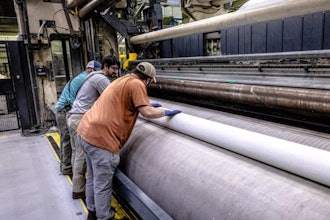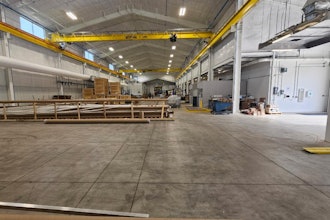New orders for manufactured durable goods in June increased $6.5 billion, or 3.1 percent, to $216.3 billion, the U.S. Census Bureau said Thursday, topping economists expectations for a 2 percent increase.
Orders for defense-related capital goods surged by more than 50 percent, while demand for commercial aircraft, transportation and computer orders showed strength as well. On Wednesday, Boeing raised its earnings outlook for 2007, citing the strength it was seeing in its commercial airline business.
It was the fourth increase in the last five months for the volatile index, and follows a 0.3 percent May increase. While the news is good for the manufacturing industry, the robust reading will no doubt stir debate among market watchers about the next move of the Federal Reserve.
Shipments of manufactured durable goods in June, up four of the last five months, increased $0.2 billion, or 0.1 percent, to $212.8 billion. This was at the highest level since the series was first stated on a NAICS basis in 1992 and followed a 3.0 percent May increase.
Unfilled orders for manufactured durable goods in June, up thirteen of the last fourteen months, increased $10.1 billion, or 1.7 percent, to $621.9 billion, also the highest level since the series began and followed a 0.7 percent May increase.
Inventories of manufactured durable goods in June, up five of the last six months, increased $1.8 billion, or 0.6 percent, to $282.6 billion. This followed a 0.7 percent May increase.
Nondefense new orders for capital goods in June increased $0.9 billion, or 1.3 percent, to $71.4 billion, while defense new orders for capital goods in June increased $3.5 billion or 51.2 percent, to $10.4 billion.
Meanwhile, sales of new homes fell in June by the largest amount in four months, while the inventory of unsold homes climbed to a record high, providing further evidence that the once-booming housing sector is slowing.The Commerce Department reported Thursday that new home sales dropped by 3 percent last month to a seasonally adjusted annual sales pace of 1.131 million units. It marked the first drop since an 11.5 percent plunge in February.
Sales of both new and existing homes set records for five consecutive years as the housing industry enjoyed a boom powered by the lowest mortgage rates in four decades. But rates have been steadily rising this year as the Federal Reserve tightens credit conditions as a way to slow the economy and keep inflation under control. Analysts are looking for home sales to drop by around 10 percent this year.
The government reported that the median price of a new home was $321,300 in June, which was up by just 2.3 percent from a year ago and was down by 1.5 percent from May.


















